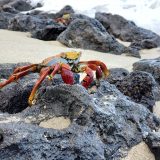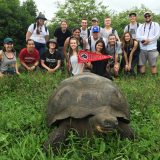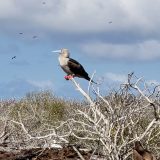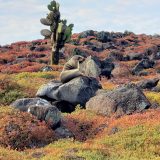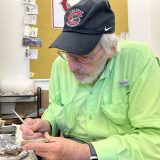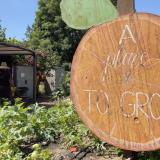
A Trip to the Galápagos Alex Graden '20 shares how his Interterm course exceeded his expectations.
February 12, 2020
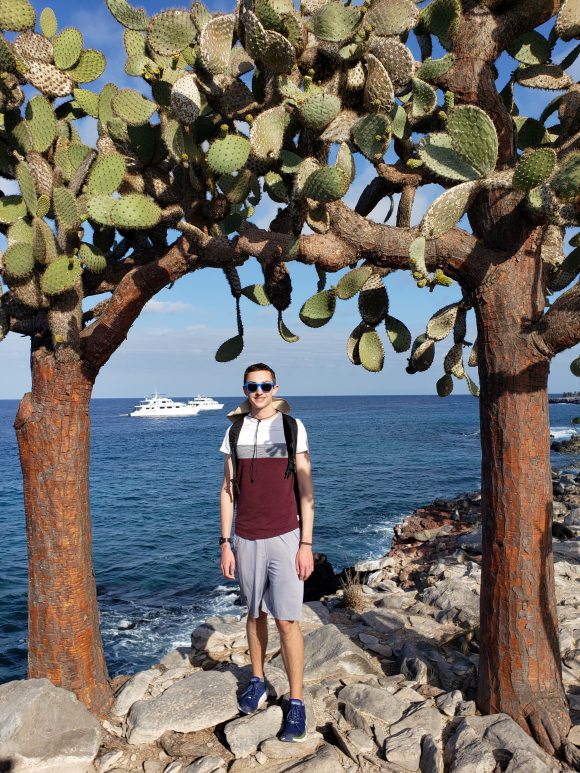 Alex Graden is a senior biochemistry and molecular biology major. He participated in the ENV 227 Interterm Travel Course – 2020 Galápagos Trip.
Alex Graden is a senior biochemistry and molecular biology major. He participated in the ENV 227 Interterm Travel Course – 2020 Galápagos Trip.
This past interterm, I took an amazing travel course with 13 other Chapman students to the Galápagos Islands. There was also a lot of pre-trip preparation. As an independent study, one other student and I met once a week with Dr. Jeremy Hsu in the fall to discuss peer-reviewed articles about the Galápagos, ranging from population genetics to ecotourism. Once interterm started, we spent half of our time with Dr. Fred Caporaso and the other half with Dr. Hsu. Both classes prepared me on what to expect by discussing the history of the Galápagos as well as the science and evolution occurring on the islands.
As someone who has only heard about the islands in biology textbooks, it was so surreal to actually visit the unique islands. To my surprise, the islands were not at all what I had previously pictured. The islands were divided into desert-like lowlands and tropical highlands, although most of the islands visited only had lowlands. We had our first experience with wildlife as soon as we stepped off the plane on the island of Baltra. Land iguanas were soaking up sunlight on the rocks right outside of the small airport. After leaving Baltra, there were animals everywhere we looked on the islands.
One aspect that makes the Galápagos so special is that the animals do not have any natural predators. This means we were able to get very close to all wildlife, and some of the animals curiously approached us. The first animals we saw were two different species of birds known as boobies: the Nazca booby and Red-footed booby. The Nazca booby must have just finished their breeding season because almost every parent was nesting with a hatchling and walking around with their new chick. Seeing the two species of boobies was an example of niche differentiation, which was shown by the Red-footed boobies occupying the branches and bushes just off the ground while the Nazca boobies were all on the ground. The Nazca boobies practice siblicide, and it was very eye-opening to see a parent taking care of one hatchling while there was an abandoned egg placed 2 feet away from the nest. The siblicide originated years ago when only some of the Nazca boobies practiced siblicide, but those boobies survived and passed on their genes to their offspring who, generations later, still practice the siblicide. Reading and learning about it is one thing, but seeing it in person really puts perspective on how nature functions.
We visited a total of eight islands, and each one had something different to offer. South Plaza was the home of a hybrid iguana that was a mix of a male marine and female land iguana. It was fascinating to discover that the hybrid iguana is unable to reproduce, which would indicate a very low fitness. The famous tortoises seen in the highlands of Santa Cruz were even larger than I could have imagined. To stare into the eyes of a species that has been around since the dinosaur’s age was truly remarkable and humbling in a sense because that means that tortoises have been alive longer than the entire human race. The sea lions deserve the title of dogs of the sea because the pups would act like puppies playing around with each other in the water. My favorite moment of the entire trip was being able to play with sea lion pups in the water while snorkeling. I remember feeling pure happiness for at least an hour after the fact because they would look at me while playing with such curiosity and innocence.
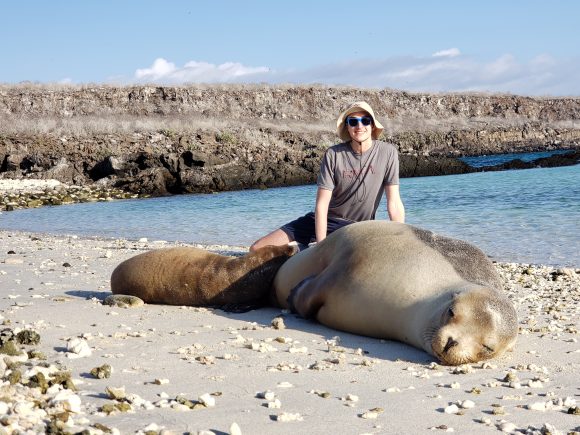
We were fortunate enough to meet up with another Chapman professor, Dr. Douglas Fudge, who was working on his renowned hagfish research. Dr. Fudge was kind enough to show us a few of his new specimens, give great background information about the hagfish and his research with them, and answer any questions we had. I remember thinking to myself, “What are the odds that on such an exclusive trip, we would see a Chapman professor conducting his research there too.” Although we did not get to play with the hagfish slime, I am sure he would let any of us do so if we stop by his lab during the spring semester.
Overall, the trip exceeded my expectations. I learned so much about ecology and evolution both before the trip as well as in the Galápagos, and upon seeing all of the different mocking birds and finch beaks up close, it was strange to think that years ago Charles Darwin made similar observations. Our naturalist Martín was also superb at describing the animals, their niches, and conservation efforts working toward preserving the Galápagos islands and all of its inhabitants. Seeing so many different species of flora and fauna in such a relatively small area was truly amazing, and I do hope that the ecotourism occurring does benefit the wildlife. My hope is to one day return to the islands, but I know the chances of doing so are very limited. Nonetheless, I am so grateful for the opportunity provided by Chapman to experience what I would consider as the 8th wonder of the world.
To read more stories about the Galápagos trip, click here.
